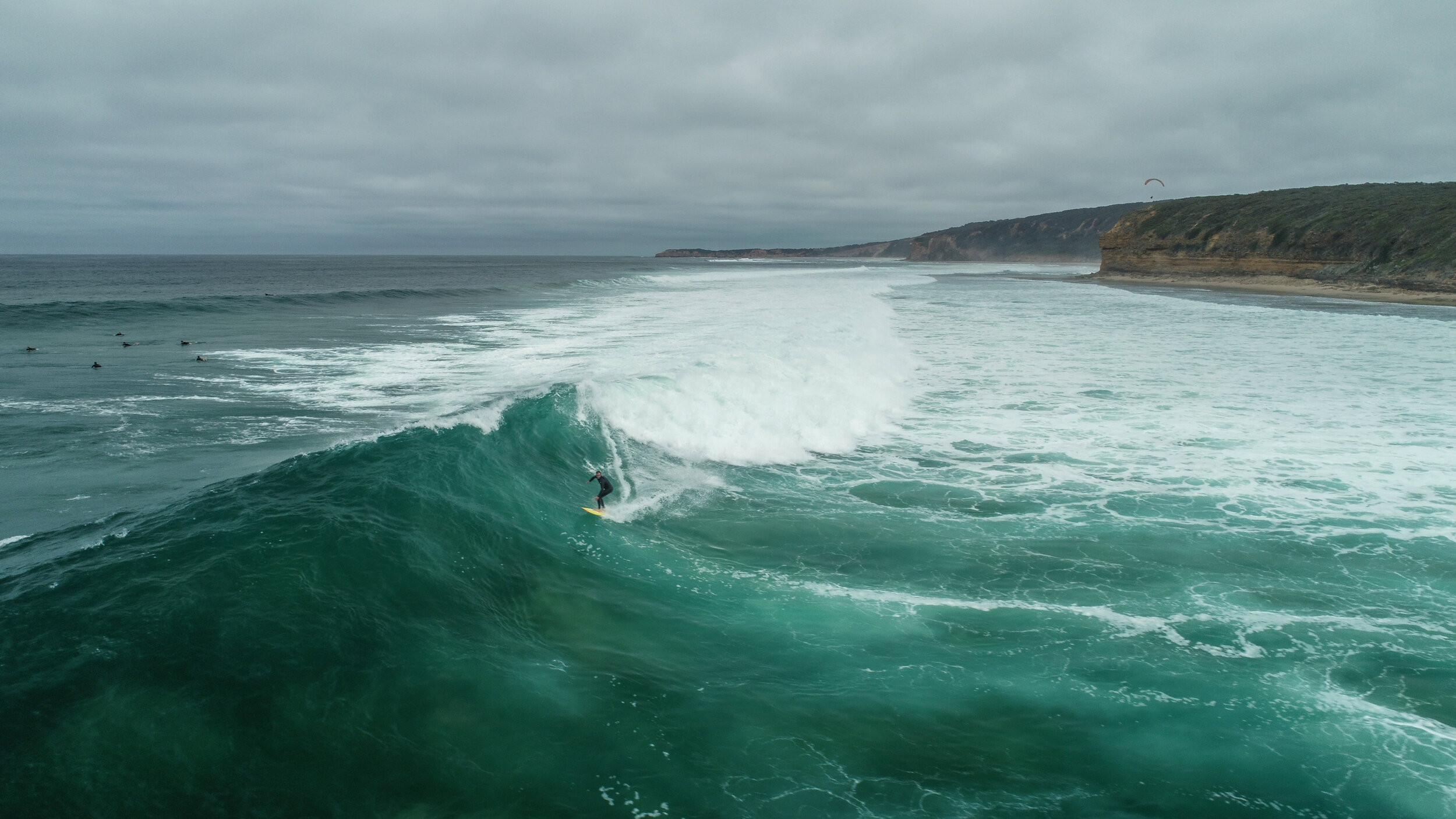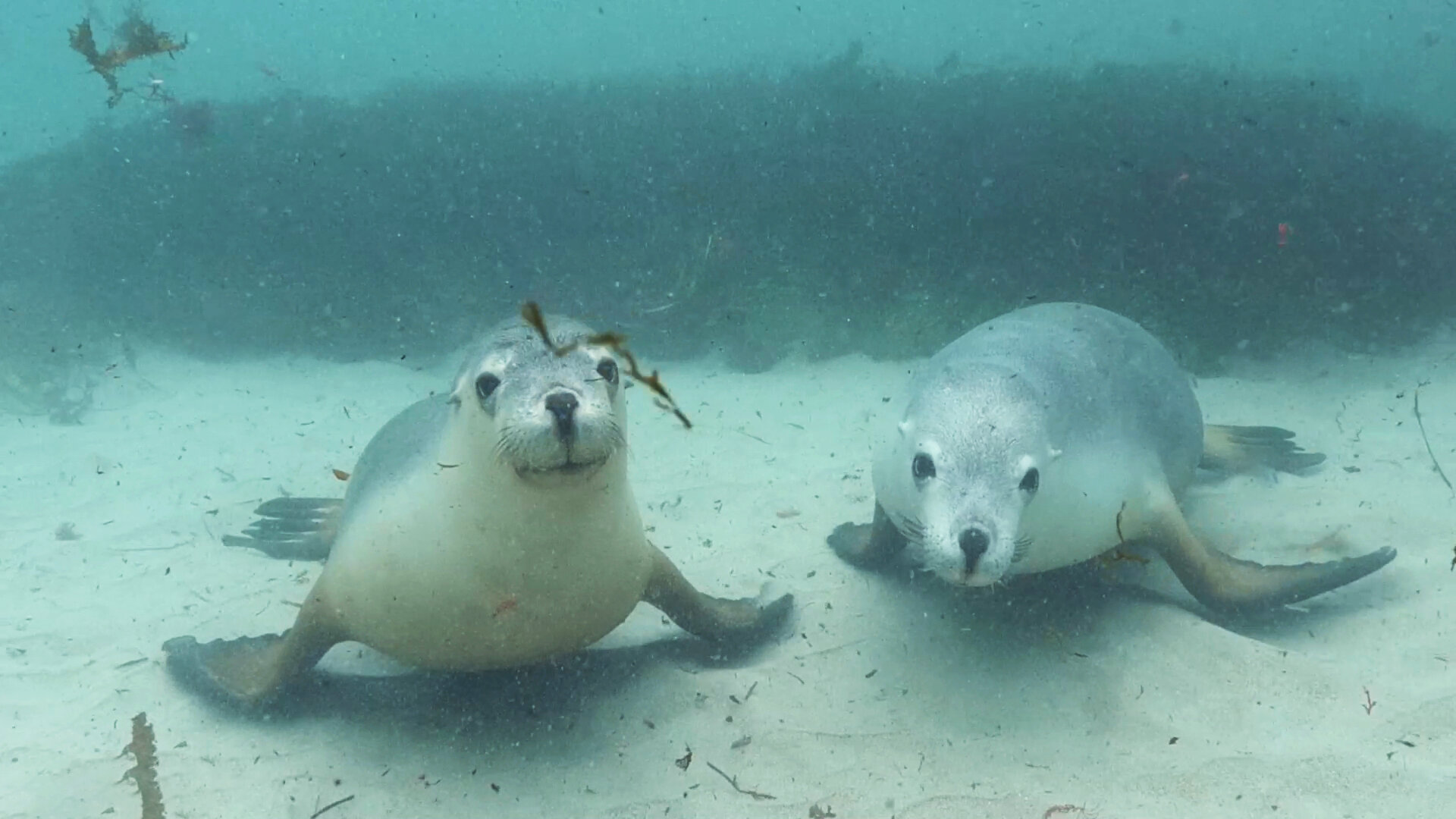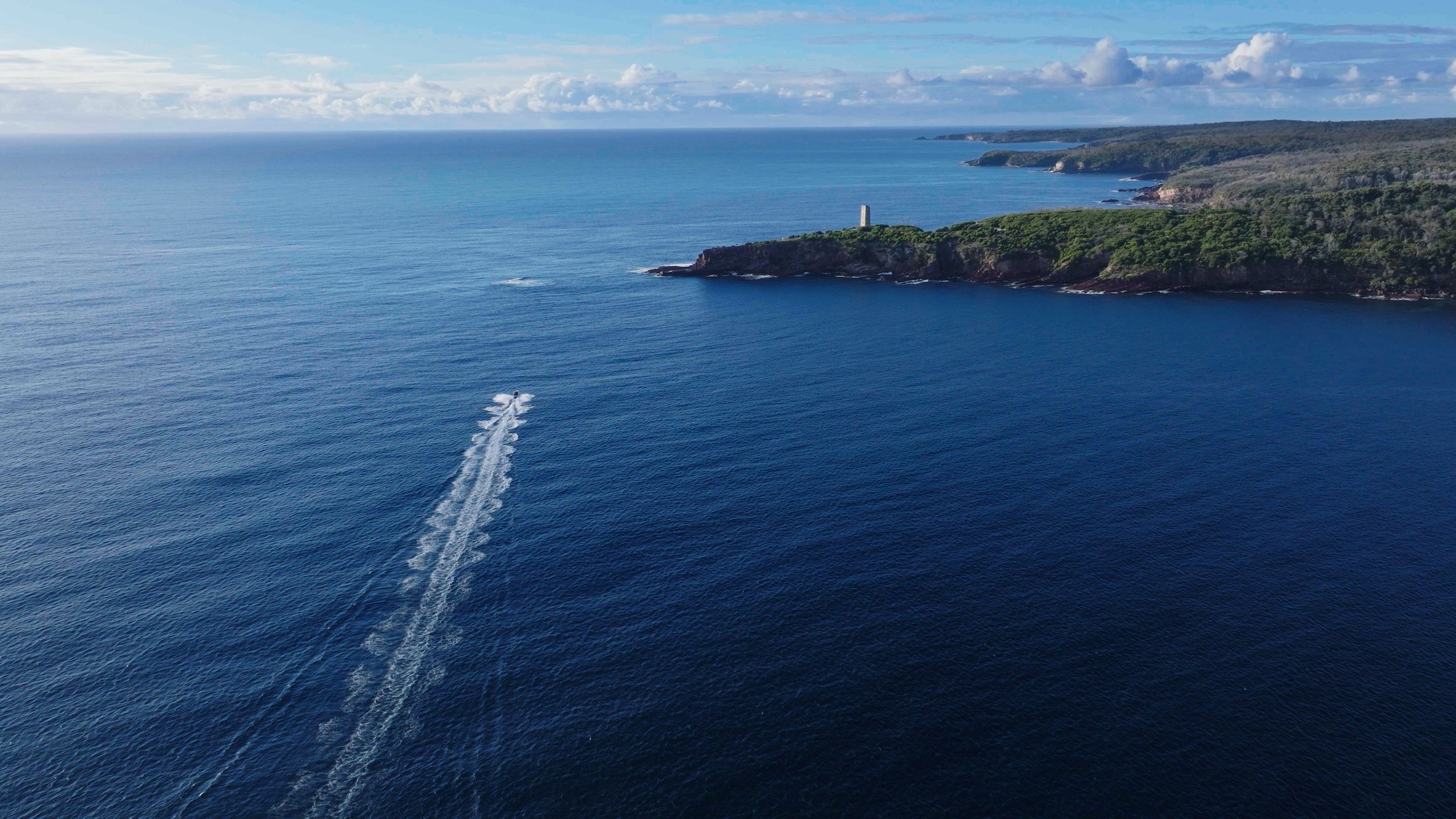australian sea lion
Meet one of the rarest animals on earth.
Specialised Ocean Hunters
The playful Australian Sea Lion is a fascinating creature and one of the rarest in the world. Their entire population lives along the southern and western coastlines of the Great Southern Reef with about 85% living in South Australia and the other 15% in Western Australia, and they are the only endemic pinniped in all of Australia.
Agile in both the water and on land, the Australian sea lion uses their front flippers to prop themselves up and their back flippers to help them “walk” on land. In the water they use their flippers to propel themselves and their back flippers also work as a rudder to steer. Sea lions can hold their breath up to 12 minutes. They are referred to as benthic foragers meaning they feed from the sea floor on species like cuttlefish, octopus, small rays, sharks and rock lobster.
Due to over-hunting for their leather and oil during the 19th century, populations of Australian sea lions were decimated to a small fraction of what there once were. Because they have a long and complicated breeding cycle, high site fidelity of females and a high mortality rate, the Australian sea lions are a vulnerable species. Their largest threat is getting entangled in fishing gear and marine debris, but other threats include large sharks, being hit by boat propellers, pollution and overfishing which limits access to prey.
Image: Gergo Rugli
Many of us know about the delight and playfulness of the rare Australian sea lion, but how much do you know about their habitats and vulnerabilities?
Australian sea lions live in colonies on very remote islands along the southern and western coastline of the country and are found nowhere else in the world. They swim very long distances and sometimes all the way out to the continental shelf, diving deep to forage for their food.
Image: Gergo Rugli
Proud Parents
Australian sea lions live in “colonies” on a variety of remote islands and coastlines of southern and western Australia. The sea lion’s gestation period is unusual in the pinniped family as it can last around eighteen months and is not synchronised between each colony. During the breeding season the male sea lion (bull) will become aggressive and sometimes territorial guarding their females until they are ready to mate.
Once the baby sea lion (pup) is born, the mother will only look after the new pup, possibly fighting off the previous season’s pup from trying to suckle from her. These sea lions also practice alloparental care, which means that they will adopt a pup if, for example, its parents die or if they become separated.
Fin Footed
Seals and sea lions are marine mammals called pinnipeds (meaning fin footed). Sea lions can be distinguished from seals by the small flaps for outer ears. They are also louder than seals and will "walk" on land using their large flippers. You can recognize Australian Sea lions by their short blonde or ash grey fur, creamy coloured underbellies, short flippers and bulky body.
Cameras attached to Australian sea lions to capture movement and dive data to identify and map critical habitats and foraging behaviours.
University of Adelaide and SARDI Phd Candidate, Nathan Angelakis has been capturing footage showing Australian sea lions travelling as far as the continental shelf for food.
The footage has shown that Australian sea lions use specialised strategies like flipping rocks, ambush predation and chasing to capture a variety of prey including fish, sharks, rays and cephalopod species. They also use these strategies throughout a diverse range of habitats like luxuriant seagrass meadows, vast sand plains, deep water sponge gardens, and complex reef ecosystems. The videos also allowed scientists to map these unexplored areas along the Great Southern Reef.
Custom built underwater cameras with a range of sensors and controls were used to program the video recordings. They can control at what depths video footage is collected and even exact periods within a day. Built in LED lights also allow researchers to collect footage at night, twilight and when the Australian sea lions are foraging at a depth of more than 100 metres.
It has been hypothesised that Australian sea lion mothers use social learning to pass on foraging skills to their pups, a behaviour that has now been captured on video for the first time! Angelakis describes the interactions of a mother taking her pup on an 8 hour trip to sea,
Image: Gergo Rugli
“When she was with her pup, they continuously dove together, moving across diverse habitats. We even got footage of the mother capturing a giant cuttlefish, while the pup was right next to her, suggesting that the mother is demonstrating to the pup how to locate, capture and consume prey.”
This project was supported with funding from The Australian Government under the National Environmental Science Program (NESP), Marine and Coastal Hub (https://www.nespmarinecoastal.edu.au/project/4-14/) and The Ecological Society of Australia under the Holsworth Wildlife Research Endowment
fast facts
Species:
Neophoca cinerea
Family:
Otariidae (eared seal)
Order:
Carnivora (carnivores)
Feeding:
Benthic forager, hunts along the sea floor
Habitat:
Colonies on remote islands and coastlines
Endemic to the Great Southern Reef
Distribution:
Explore more of the great southern reef













